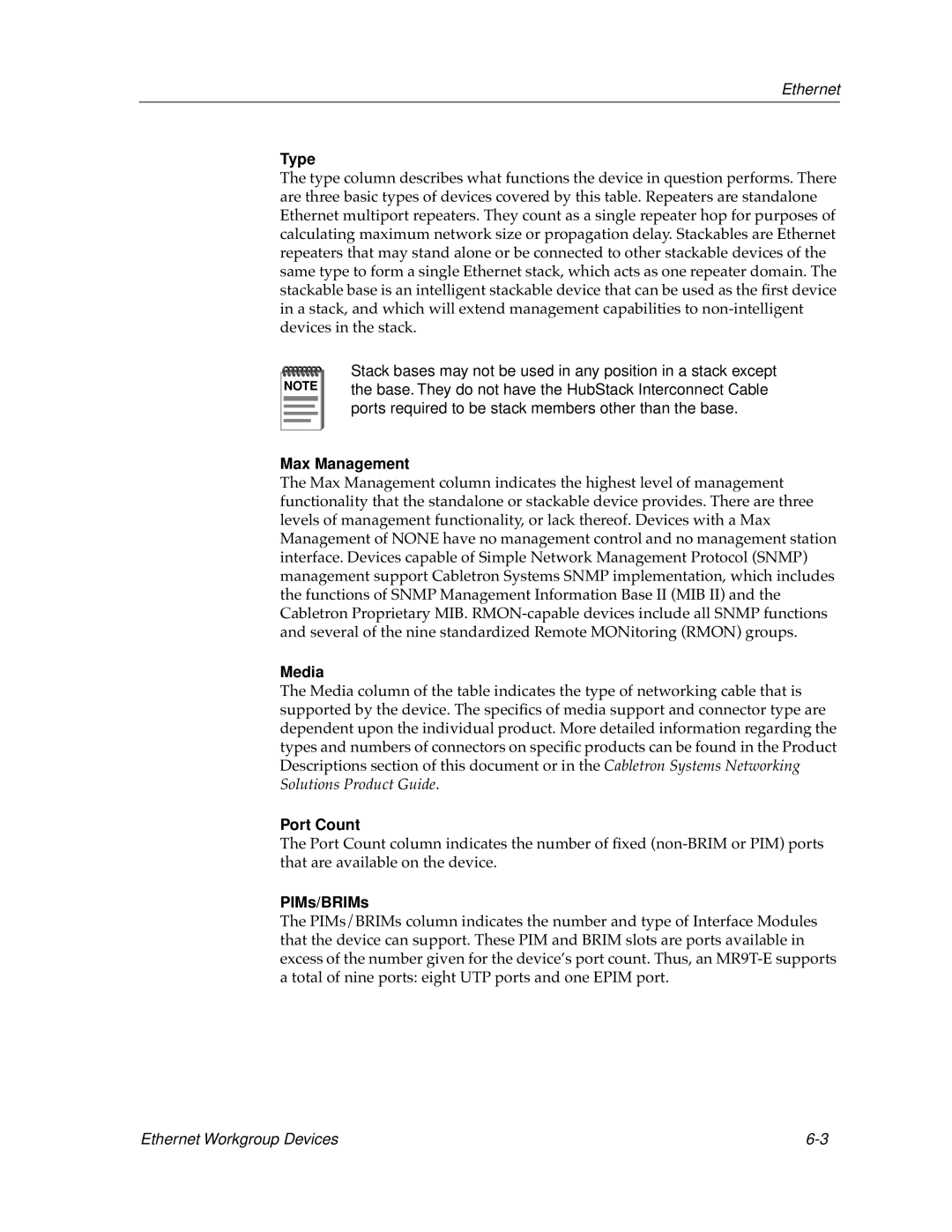
Ethernet
Type
The type column describes what functions the device in question performs. There are three basic types of devices covered by this table. Repeaters are standalone Ethernet multiport repeaters. They count as a single repeater hop for purposes of calculating maximum network size or propagation delay. Stackables are Ethernet repeaters that may stand alone or be connected to other stackable devices of the same type to form a single Ethernet stack, which acts as one repeater domain. The stackable base is an intelligent stackable device that can be used as the first device in a stack, and which will extend management capabilities to
NOTE |
Stack bases may not be used in any position in a stack except the base. They do not have the HubStack Interconnect Cable ports required to be stack members other than the base.
Max Management
The Max Management column indicates the highest level of management functionality that the standalone or stackable device provides. There are three levels of management functionality, or lack thereof. Devices with a Max Management of NONE have no management control and no management station interface. Devices capable of Simple Network Management Protocol (SNMP) management support Cabletron Systems SNMP implementation, which includes the functions of SNMP Management Information Base II (MIB II) and the Cabletron Proprietary MIB.
Media
The Media column of the table indicates the type of networking cable that is supported by the device. The specifics of media support and connector type are dependent upon the individual product. More detailed information regarding the types and numbers of connectors on specific products can be found in the Product Descriptions section of this document or in the Cabletron Systems Networking Solutions Product Guide.
Port Count
The Port Count column indicates the number of fixed
PIMs/BRIMs
The PIMs/BRIMs column indicates the number and type of Interface Modules that the device can support. These PIM and BRIM slots are ports available in excess of the number given for the device’s port count. Thus, an
Ethernet Workgroup Devices |
